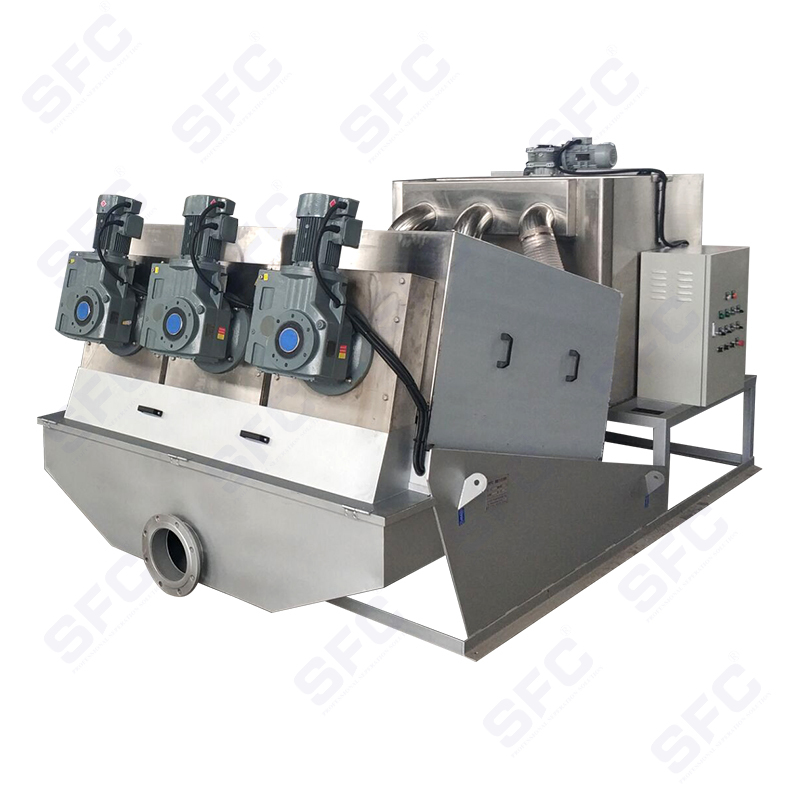How to choose suitable sludge thickening equipment to improve wastewater treatment efficiency?
Sludge thickening is a crucial step in wastewater treatment processes, helping to reduce the volume of sludge generated during the treatment of wastewater. Sludge thickening equipment is designed to increase the concentration of solids in the sludge, making it easier to handle, store, and process in subsequent stages of treatment.
In wastewater treatment plants, sludge is produced as a byproduct during the biological treatment of water. The sludge consists of organic material, microorganisms, and other contaminants that need to be removed or stabilized before disposal. Without effective sludge management, the volume of sludge generated can quickly overwhelm the plant’s capacity, leading to increased operational costs and environmental challenges.
Sludge thickening serves as the first step in reducing the volume of sludge, making it more manageable for further processing. By concentrating the solids in the sludge, the amount of liquid that needs to be treated or disposed of is reduced, leading to more efficient handling and lower transportation costs. Thickening also prepares the sludge for dewatering, anaerobic digestion, or composting, processes that further reduce the volume and improve the stability of the material.

There are several methods of sludge thickening, each using different technologies to achieve the desired results. The choice of equipment depends on factors such as the type of sludge, the volume of waste, available space, and the specific goals of the treatment plant. Some common types of sludge thickening equipment include:
Gravity thickening is one of the simplest and most commonly used methods of sludge thickening. In this process, sludge is allowed to settle in a large tank, where the heavier solids naturally sink to the bottom due to gravity. The liquid on top, containing a lower concentration of solids, is removed. This method is highly effective for primary sludge and is typically used in municipal wastewater treatment plants.
Rotary drum thickeners are widely used in both municipal and industrial applications. These machines use a rotating drum with fine mesh screens to separate solids from liquids. As the sludge passes through the drum, water is drained, and the solids are concentrated. This method is effective for thickening both primary and secondary sludge and offers high performance with relatively low energy consumption.
Belt filter presses are another popular option for sludge thickening. They consist of two or more conveyor belts that squeeze the sludge between them. The pressure applied during the process forces water out of the sludge, leaving behind thicker solids. While primarily used for dewatering, belt filter presses can also be configured to thicken sludge before it is sent to further treatment stages.
Dissolved air flotation is a more advanced method of sludge thickening that utilizes air bubbles to assist in the separation of solids from liquids. Air is dissolved into the sludge under pressure, and as the pressure is released, the air bubbles attach to the solid particles, causing them to rise to the surface. The thickened sludge is then skimmed off. This method is often used for secondary sludge, where other methods might not be as effective.
Rotary vacuum drum thickeners use vacuum pressure to remove water from the sludge as it passes through a rotating drum. The drum is partially submerged in the sludge, and the vacuum draws water through the mesh, leaving behind a thickened sludge. This technology is well-suited for handling sludges with low solids concentrations and can be used in both municipal and industrial applications.
The use of sludge thickening equipment offers several advantages for wastewater treatment plants:
Thickening reduces the volume of sludge, which minimizes the amount of material that needs to be transported, treated, and disposed of. This leads to lower operational and transportation costs and reduces the need for large-scale storage facilities.
Thickened sludge is easier to process in subsequent stages, such as dewatering or anaerobic digestion. This increases the overall efficiency of the wastewater treatment plant and reduces the energy consumption required for further processing.
By reducing the volume of sludge and improving the efficiency of treatment processes, sludge thickening helps minimize the environmental impact of wastewater treatment. It also makes it easier to manage the disposal or reuse of the sludge, reducing the risk of contamination.
The reduction in sludge volume translates into cost savings, particularly in transportation and disposal fees. Thickened sludge also allows for more efficient energy use during further treatment stages, contributing to a more cost-effective and sustainable operation.
Sludge thickening equipment plays a vital role in the wastewater treatment process by reducing the volume of sludge and making it more manageable for further processing. Whether using gravity thickening, mechanical methods, or advanced technologies like dissolved air flotation, these systems help ensure the efficiency, cost-effectiveness, and sustainability of wastewater treatment plants. As environmental regulations become stricter and the need for efficient waste management grows, the importance of sludge thickening in wastewater treatment will only continue to rise.



 English
English Español
Español













